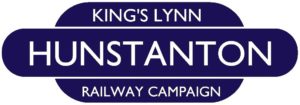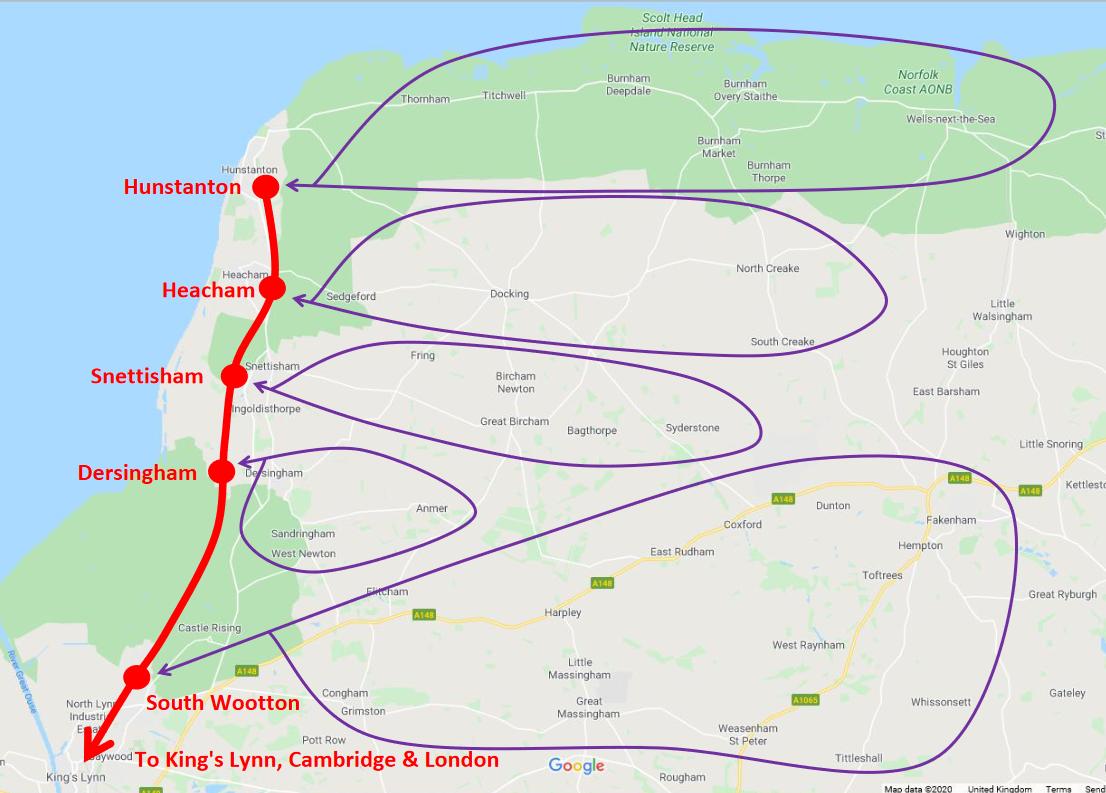WHAT WOULD A NEW RAIL SERVICE ON THE KING’S LYNN — HUNSTANTON LINE LOOK LIKE?
We envisage a direct continuation from the London to King’s Lynn main line — providing a modern rail service all the way to the coast. Stations on the reopened section of line would also benefit a wider hinterland of villages to the east (refer to plans below). This would make rail use more convenient for many journeys, as well as relieving traffic and parking problems within King’s Lynn.
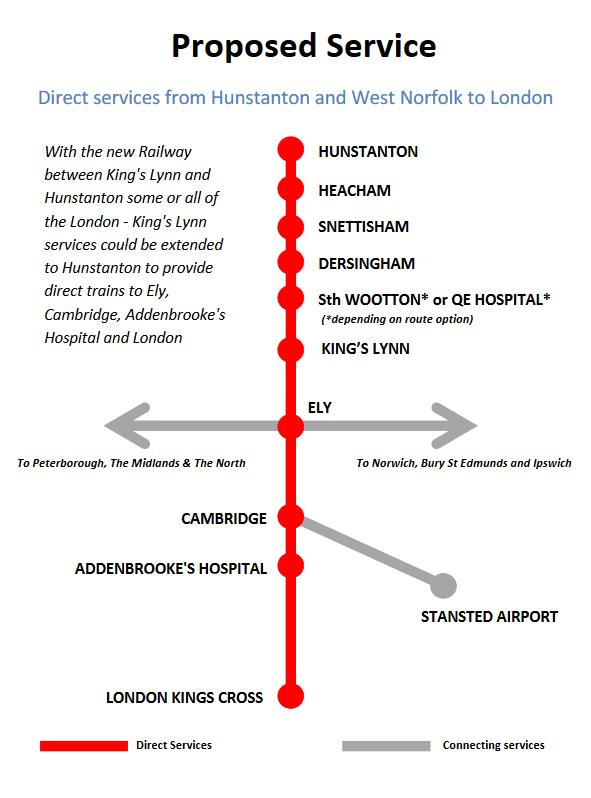
Rolling stock will depend on what is most viable, environmentally sustainable and operationally suitable at the time the line opens. The Vivarail ‘D-Train’ is presently a popular low cost model now used on many regional lines.
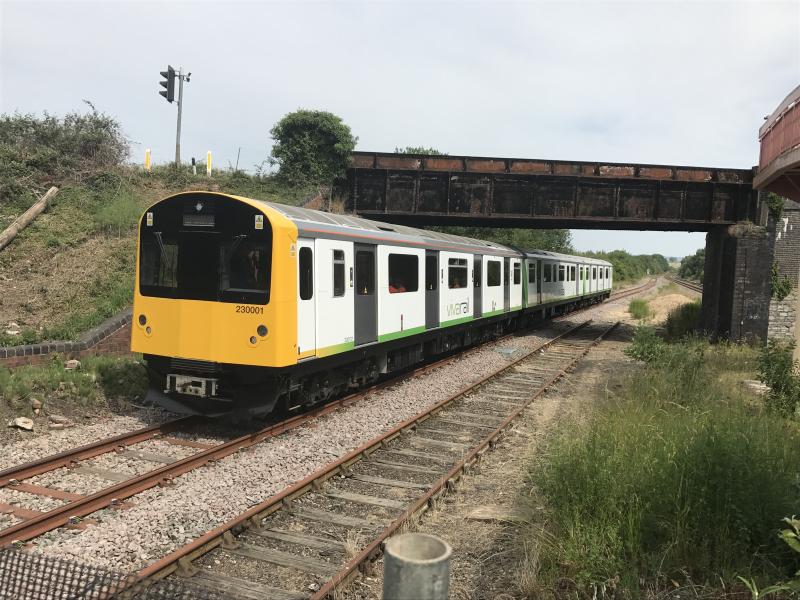
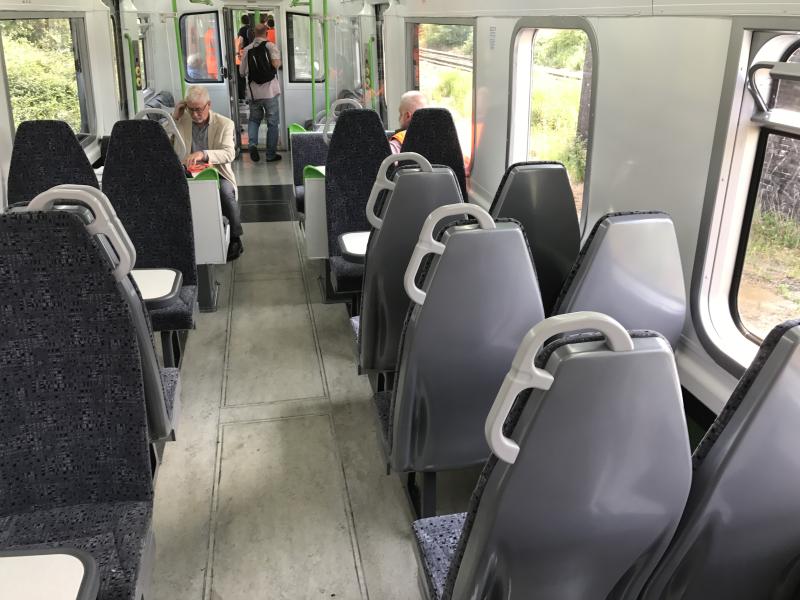
A battery version is available which is not only more environmentally friendly but also has reduced maintenance requirements and avoids the need for refuelling. This saves costly and time consuming visits to distant maintenance depots.
Another option is the “Stadler Flirt Bi-modal” Train…
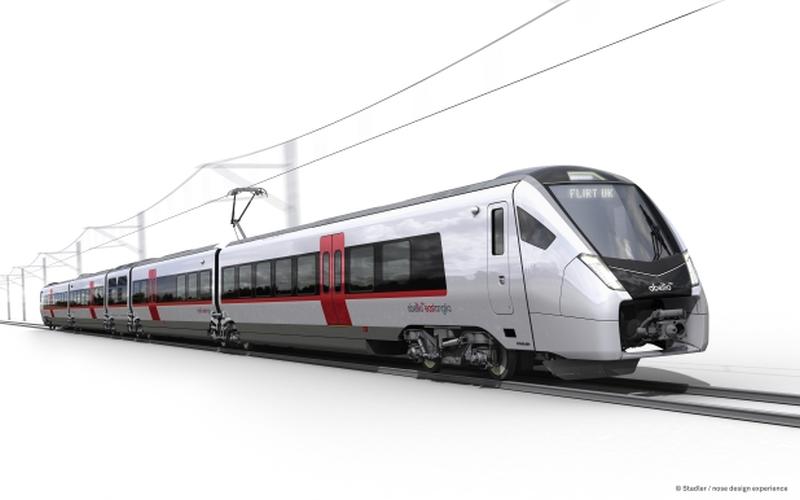
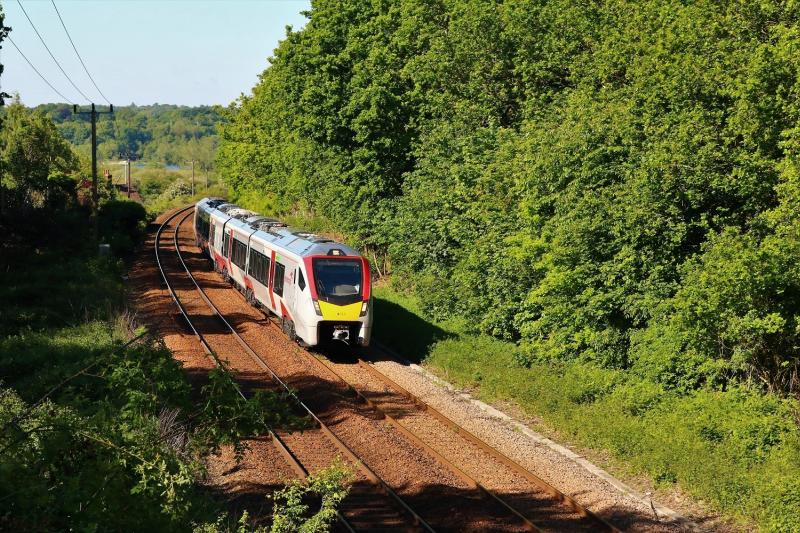
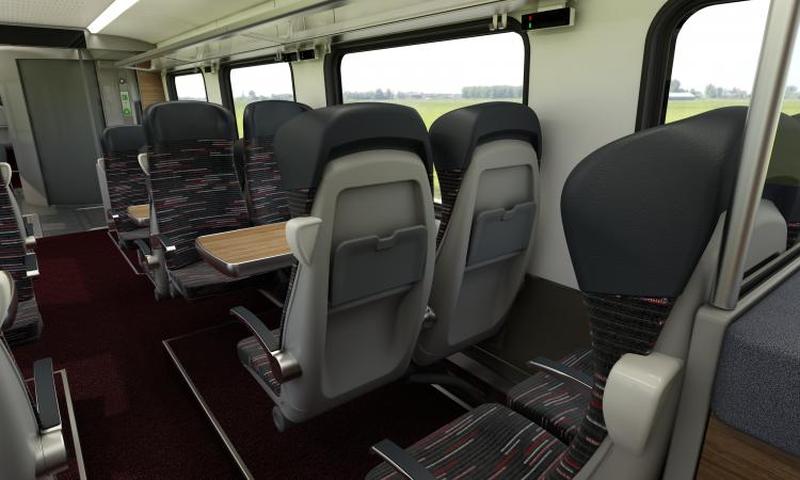
In 2018 several of these units were ordered by local operator Greater Anglia.
The units are built in Switzerland and feature the latest technology, and have a higher maximum speed than the D-Train (usually 99mph).
The advantage of these trains is the being “bi-modal” they can be used on overhead electrified lines, but also have diesel engines enabling use on non-electrified branch lines. We understand a bi-modal electric/battery version may also be developed.
This type of train could be used on a non-electrified King’s Lynn — Hunstanton Branch Line to give a through service between, say, Hunstanton and Cambridge and/or Peterborough.
As a rail line to Hunstanton would be potentially very attractive to tourists — a train service should cater for this. In the early 1900s special Sunday restaurant trains brought London golf tourists to Hunstanton for a days sport. We could have cycle cars — as illustrated here on continental trains. Come to Hunstanton and cycle the coast! Or come for a triathlon!
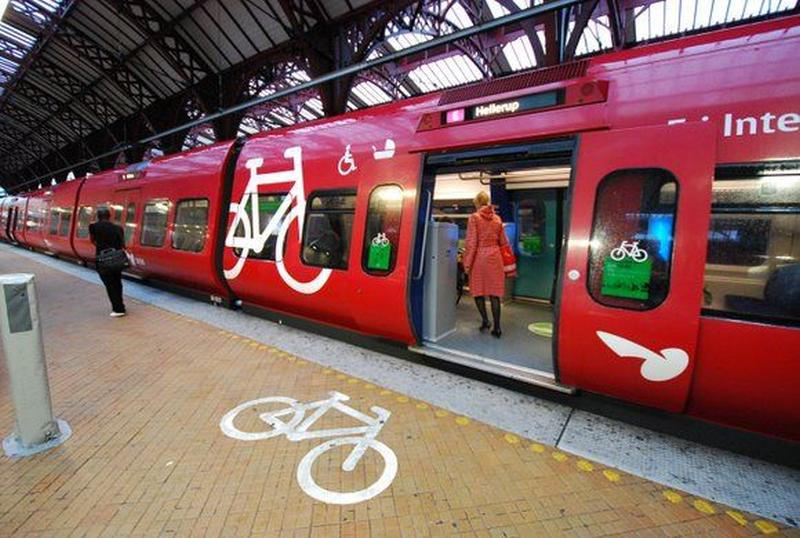
Looking to the future — perhaps we will have hydrogen fuelled trains. Hydrogen trains have been running in Germany for some years — but in 2019 the first British hydrogen train ran — HydroFLEX. The HydroFLEX ‘engine’ consists of three parts: Large hydrogen tanks inside the train store the element at high pressure, before it’s fed through a regulator into a fuel cell that uses a catalyst to combine it with oxygen, in a reaction that produces electricity and water. Yes, the only ‘exhaust’ is water vapour!
Another good thing about the HydroFLEX trial is that it utilised an existing carriage. So in theory existing rolling stock could be converted to run with this clean, efficient technology. However storing hydrogen does take space — so electric trains may still be the best way forward until hydrogen fuel cells can be refined.
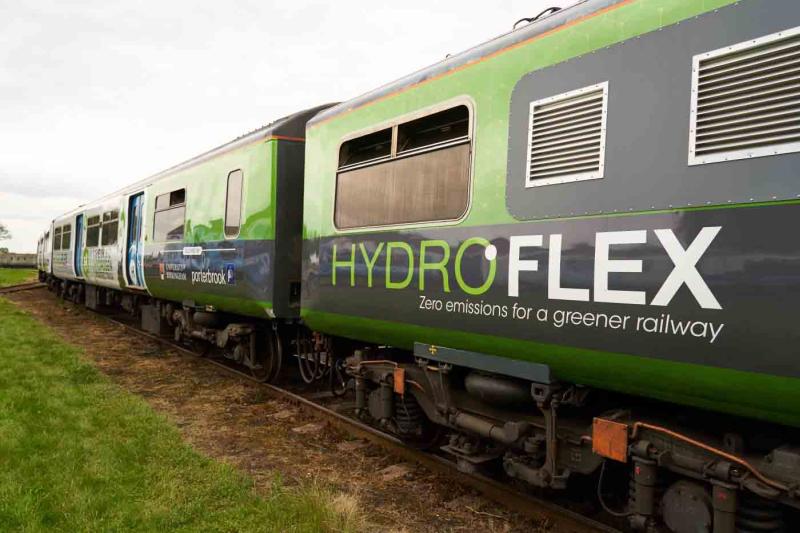
Many people have indicated they would like to see steam trains returned to the line. We think this would be great for special excursions! However our principal vision is for a modern, mass-transit system than can offer our community a fast, reliable alternative to road based transport.
